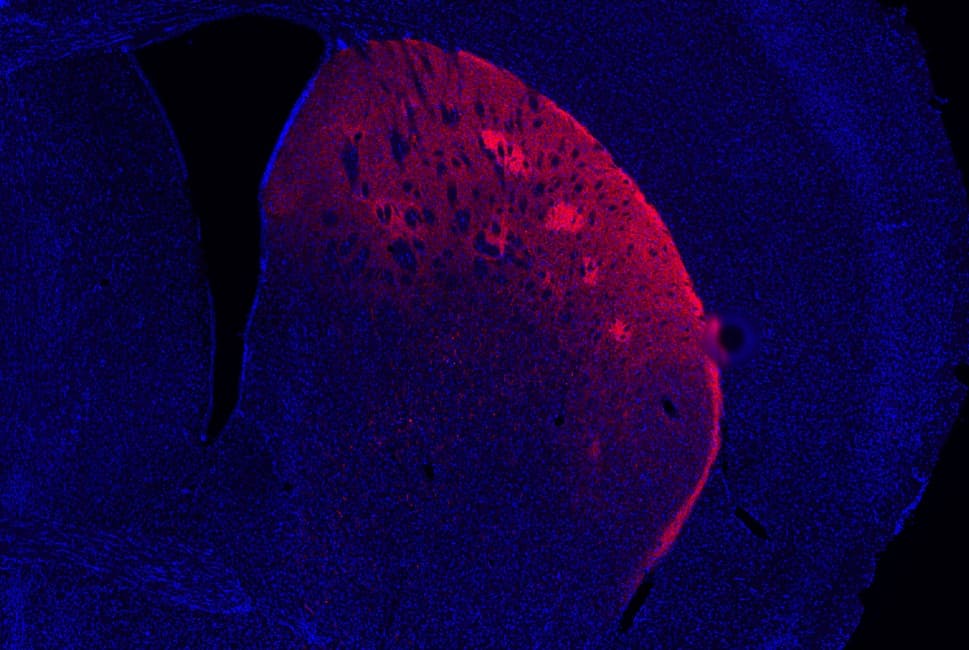
Dopamine is the most famous molecule out of the 40 or so neurotransmitters that modulate brain function. Most people are aware that dopamine is associated with pleasure and rewards or cues that predict rewards. Pop culture is so attuned to dopamine as the seat of pleasure in the brain that its chemical formula is often stamped on T-shirts, forged into earrings, and etched on people’s skin as a popular tattoo.
But dopamine and the neurons that bind to it are much more complex than meets the eye.
In a new study, researchers at Northwestern University have found that certain genetic subtypes of dopamine neurons are responsible for controlling movement in the body. This paradigm shift not only sheds new light on the dopamine system and its complex role in the brain but also uncovers fresh avenues for investigating and potentially treating Parkinson’s disease.
“When people think about dopamine, they likely think about reward signals,” said Daniel Dombeck, a neuroscientist at Northwestern who co-led the study. “But when the dopamine neurons die, people have trouble with movement. That’s what happens with Parkinson’s disease, and it’s been a confusing problem for the field.”
Decoding Dopamine’s Dual Role
The fact that the loss of dopamine neurons is strongly associated with the dreaded neurodegenerative disease has always been a smoking gun, pointing to the neurotransmitter’s much broader role in the brain. But it’s only recently that scientists have uncovered evidence that explains how the dopamine system is involved in movement.
“We found a subtype that is motor signaling without any reward response, and they sit right where dopamine neurons first die in Parkinson’s disease. That’s just another hint and clue that seems to suggest that there’s some genetic subtype that’s more susceptible to degradation over time as people age.”
This revelation builds upon a prior study from Northwestern, which first identified dopamine neurons linked to movement in mice. Neuroscientists initially thought that these neurons comprised just a tiny fraction of the total number of neurons. Or perhaps they were just misreading some motor signals in the brain.
But when they dug deeper with this latest research, they found the landscape of dopamine neuron functionality is much broader than they imagined. The researchers utilized genetic tools to segregate and label neuron populations in mice based on gene expression. The mice were genetically modified to generate fluorescent proteins which made neurons glow during specific behaviors, such as moving a particular body part.
These experiments showed that about 30% of all the dopamine neurons only glowed when the rodents were performing some kind of movement. That’s a huge proportion. But this is only one subtype of dopamine neurons. There’s another subtype of dopamine neurons that only glows when the animal is exposed to a reward or, inversely, an uncomfortable stimulus that triggers an avoidance response.
Suddenly, Parkinson’s makes a lot more sense now — and with this knowledge, new treatments may be on the horizon. Scientists were always puzzled by the fact that patients with Parkinson’s lose dopamine neurons while developing difficulties with movement.
The researchers observed a striking alignment between dopamine neurons tied to the process of accelerating and the brain’s midsection vulnerable to Parkinson’s disease. Paradoxically, the surviving dopamine neurons correlated with the process of deceleration.
“We’re wondering if it’s not just the loss of the motor-driving signal that’s leading to the disease — but the preservation of the anti-movement signal that’s active when animals decelerate,” Dombeck said. “It could be this signal imbalance that strengthens the signal to stop moving. That might explain some of the symptoms. It’s not just that patients with Parkinson’s can’t move. It could also be that they are being driven to stop moving.”
The findings appeared in the journal Nature Neuroscience.









